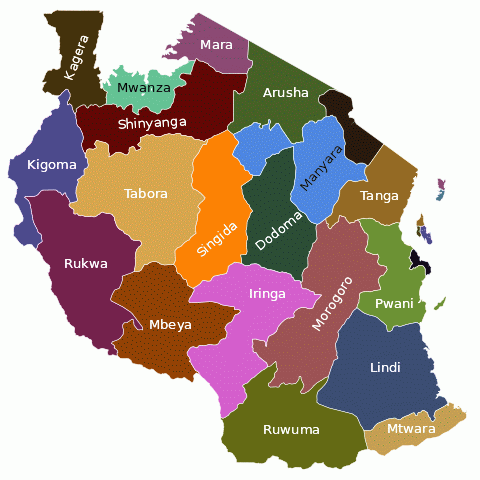






► TANZANIA
PhotoShop Online (widget)
Tanzania in statistics: people and society
Background: After achieving independence from Britain in the early 1960s, Tanganyika and Zanzibar merged to form the nation of Tanzania in 1964. The state is composed of 26 regions (mikoa): Arusha, Dar es Salaam, Dodoma, Iringa, Kagera, Kigoma, Kilimanjaro, Lindi, Manyara, Mara, Mbeya, Morogoro, Mtwara, Mwanza, Pemba North, Pemba South, Pwani, Rukwa, Ruvuma, Shinyanga, Singida, Tabora, Tanga, Zanzibar Central/South, Zanzibar North, Zanzibar Urban/West.
Full country name: United Republic of Tanzania
Local form: Jamhuri ya Muungano wa Tanzania
Government type: federal republic
National holiday: Union Day (Tanganyika and Zanzibar), 26 April (1964)
Religions: christian 30%, muslim 35%, indigenous beliefs 35%
Population: 45 mln (January 2013 est.), country comparison to the world: 30
Location: Eastern Africa, bordering the Indian Ocean, between Kenya and Uganda (north), Mozambique, Malawi and Zambia (south)
Area: 947,300 sq km; country comparison to the world: 31

Languages: Swahili/Kiswahili (official), Kiunguja (name for Swahili in Zanzibar), English (official, primary language of commerce, administration, and higher education), Arabic (widely spoken in Zanzibar), many local languages
Currency: Tanzanian shilling (TZS)
Natural resources: hydropower, tin, phosphates, iron ore, coal, diamonds, gemstones, gold, natural gas, nickel
Agriculture - products: coffee, sisal, tea, cotton, pyrethrum (insecticide made from chrysanthemums), cashew nuts, tobacco, cloves, corn, wheat, cassava (tapioca), bananas, fruits, vegetables, cattle, sheep, goats
Industries: agricultural processing (sugar, beer, cigarettes, sisal twine); diamond, gold and iron mining, salt, soda ash; cement, oil refining, shoes, apparel, wood products, fertilizer
Sources thanks to: Republic of Tanzania (on wiki)
The World Factbook of CIA - Tanzania


